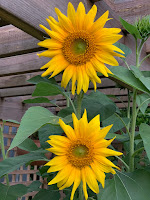Ask me what is the most dazzling theatre experience I have ever had and I will answer without a moment's hesitation that it was the 1993 premiere production of
L'homme qui... at the fabulously renovated old Paris theatre, Theatre des Bouffes du Nord.
This stunning drama, inspired by Oliver Sacks'
The Man Who Mistook his Wife for a Hat, was the work of British director Peter Brook and his renowned troupe of actors, dancers and musicians known as the International Centre for Theatre Research. Brook's multinational company had had a peripatetic existence until the troupe took up residence at this Paris theatre, built in 1876 and renovated in 1974 under the direction of Brook and his partner Micheline Rozan. The theatre, and the unusual way in which it was brought back to life in a way that maintained its aura as a living relic, is worth a story of its own. The Theatre des Bouffes du Nord featured prominently as
a location for the classic French thriller,
Diva. And if you read French, have a look at
the theatre's official website for an overview of its amazing history and restoration.
We arrived early at the theatre that night, as we weren't sure how difficult it would be to find. (We'd been told it was behind the Gare du Nord, one of Paris's larger railway stations.) And we also knew that Brook's policy did not allow numbered or reserved seats. Tickets were all one price; you sat wherever you wanted, or could. It was necessary to arrive early to get a good seat. And so we had at least 15 minutes in which to sit and marvel at the incredible ambiance created by a restoration that had retained as much as possible of the fabric of more than one hundred years of use. Peeling paint on the stage's walls and overhead a giant domed grill of rusted metal contrasted sharply with crisp new seating that appeared as if suspended within the original and untouched perimeter walls.
The play itself, of course, was performed mainly in French. I say 'mainly' because a good deal of what some of Sacks' patients spoke was gibberish, in keeping with their various brain disorders. Allen doesn't speak or understand French. He knew about Sacks' work, as did I, though I don't know if either of us had yet read the book which inspired the production. But not only did Allen feel he understood most of what was going on, we both felt we could almost 'hear' what the afflicted patients were trying to say in their nominally unintelligible ramblings. All of this was due to the magnificence of the acting – there's just no other word that describes it better than 'magnificent'.
At the play's conclusion, the audience sat silent and stunned for what seemed like ages. Then applause and foot-stamping erupted (the built-up seating had a wooden floor, I think). And when the tumult finally died down, many people, like us, remained rooted to their seats. All around I could hear intense conversations in French start up about the play and its contents. It was an electrifying experience – just what good theatre should be, but so rarely is.
Why do I so often now think back to that magical Paris experience? I suppose it's because in some ways I feel I'm now living inside a Sacksian world. How strange it is that the single most inspiring theatrical experience I have ever had should so eerily have prefigured where our lives were destined to end up 20 years later – Allen struggling, mainly in vain, to make himself understood. And his shrinking brain in ever-increasing revolt against his personality and all that he once was, knew and accomplished.
It seems only appropriate to end with a statement about aphasia taken from an April 2 post on
Oliver Sacks' blog:
What is aphasia?
Imagine knowing what you want to say, but your brain refuses to let you utter even the simplest word. Or imagine listening to your friends and family and having no idea what their words mean. Sometimes the ability to read or write is affected too.
That, unfortunately, is the world Allen now inhabits – a place a fellow sufferer has called "Planet Aphasia".


































